#thomas bopp
Explore tagged Tumblr posts
Text
Episode 123: Lights! Phoenix! Action!

Garth has returned from his special assignments, and Cody has returned from Phoenix with a tale to tell. Get out your telescopes and potato cameras, look upwards and through the past to the mid 90's as we explore one of the largest mass UFO sightings in history! And along the way we'll take a ride on a warthog too.
As always, please come join the episode discussion on the Least Haunted Discord!
Enjoy the images and videos below!
Newspaper article with artists interpretation of eye witness accounts of UFO that flew over Arizona March 13th, 1997.

Flight path of UFO. Starting in Henderson, Nevada and finishing near Tucson, Arizona. A route of approximately 370 miles or 546 Kilometers. This was traveled in 1.25 hours.

At 10:00 pm Mike Crispin looks southward across Phoenix towards "South Mountain" and captures this footage.
youtube
Approximate line of sight of Mike Crispin, with his position being the North (top) end of the line.

Arizona Governor Fife Symington III holds a press conference about The Phoenix Lights with an aide dressed as an alien.

The A-10 Thunderbolt II aka "The Warthog" Close Air Support (CAS) jet aircraft. Development began in 1972, and it entered into service in 1977. Headquartered at Davis-Monthan Air Force Base in Tucson, Arizona.

The General Electric GAU-8 Avenger 30mm Gatling Gun.

The Gau-8 Avenger can fire 3,900 30 millimeter depleted uranium rounds a minute. The round on the left is the 30 millimeter round, with the left being the round of a 30.06 rifle for comparison.

The Barry Goldwater Gunnery Range and Training Area.

The LUU2 Illumination Parachute Flare.

Sales Brochure for the flare with selected specs. Note that it is a A-10 Warthog that is shown deploying the flare in official promotional material for the hardware.

A video Analyisis of the Crispin footage that shows what is really going on with the second set of lights seen on March 13th, 1997.
youtube
Enhanced image from the video that shows the night time lights superimposed on top of daylight footage from the same exact spot and angle. This proves that the lights were beyond South Mountain, and confirms the official explanation of a LUU2 flare training exercise over the Barry M. Goldwater Gunnery Range.
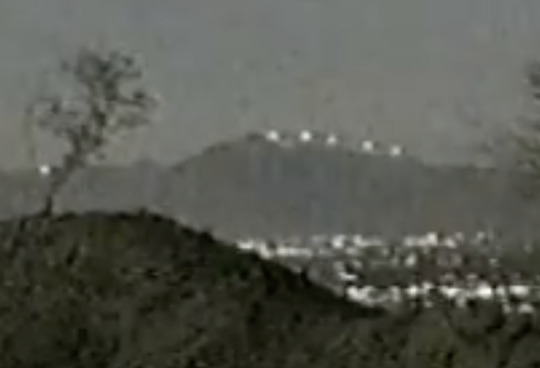
GARTH'S CORNER!
Comet Hale-Bopp

Alan Hale, Astronomer and one of two discoverers of the comet.

Thomas Bopp (1949-2018), the other discoverer of the comet.

Model of the path of Comet Hale-Bopp, credit for the animations goes to Phoenix7777 posted on Wikipedia - working from Data source: HORIZONS System, JPL, NASA.
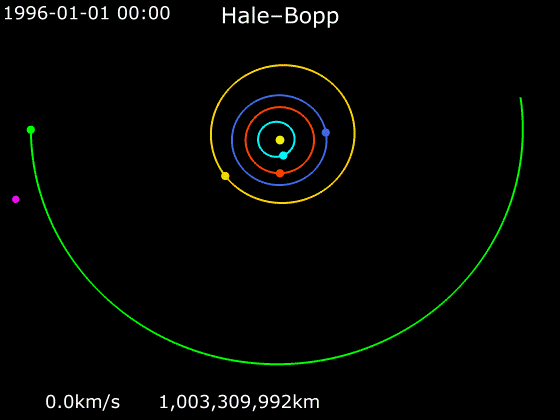
3D model of the same

Heaven’s Gate website, which is still active.
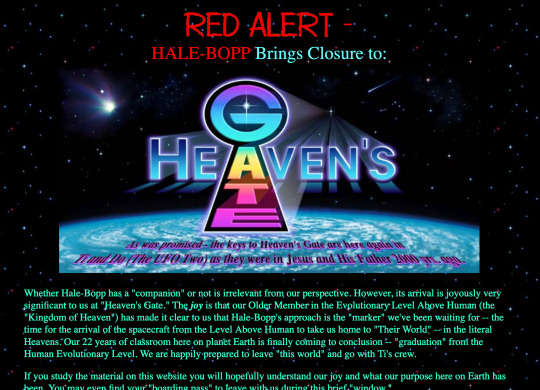
How to report a comet: https://skyandtelescope.org/observing/how-to-report-a-comet-discovery/
#leasthaunted#podcast#funny#paranormal#podcasts#skeptics#ufos#aliens#aliens and ufos#ufo sightings#uaps#uap sighting#phoenix lights#ufo lights#phoenix arizona#a 10 thunderbolt ii#a 10 warthog#operation snowbird#air force operation#garth's corner#comet hale-bop#alan hale#thomas bopp#heaven's gate#comet#comets#Youtube
20 notes
·
View notes
Text

Hale-Bopp, Jupiter, and the Milky Way - July 23rd, 1996.
"Shining brightly, the mighty Jupiter rules this gorgeous Kodacolour photo of the Milky Way near Sagittarius. Astronomer Bill Keel took the picture earlier in the month (July 7th, 1996) while standing near the summit of Hawaii's Mauna Kea, contemplating the sky in the direction of the center of the galaxy (right of the picture's center). In addition to the gas giant planet, which is well placed for evening viewing, the image contains an impressive sampler of celestial goodies. Many famous emission nebulae are visible as reddish patches - M16, the Eagle nebula, is just above and right of the center, with the Horseshoe nebula, M17, just below it and farther to the right. Also, look for the Lagoon Nebula, M8, as the brightest red patch at the right of the picture with the Trifid Nebula, M20, just above it and to the left. The milky glow of distant unresolved stars in the plane of our galaxy (thus the term Milky Way) runs through the image, cut by dark, absorbing, interstellar dust clouds. The much anticipated comet Hale-Bopp is also visible. The comet was discovered while still beyond the orbit of Jupiter on July 23rd, 1995, independently by Alan Hale and Thomas Bopp."
#nasa#space#cosmos#universe#astronomy#astrophysics#astrophotography#hale-bopp comet#jupiter#milky way#eagle nebula#horseshoe nebula#lagoon nebula#trifid nebula#stars
30 notes
·
View notes
Text

M70 // Fran Jackson
Separated from its neighbor M69 by only 1,800 light years, M70 is pretty similar to M69 is terms of size and brightness, although M70 is slightly larger and more luminous. Unlike its neighbor, M70 is more metal-poor indicating that it belongs to the spherical halo rather than the bulge.
Fun fact: this was the object Alan Hale and Thomas Bopp were observing in 1995 when they discovered their eponymous comet, Comet Hale-Bopp on July 23, 1995!
#astronomy#astrophotography#messier marathon#stars#star cluster#globular cluster#messier#messier 70#M70#NGC 6681#sagittarius
22 notes
·
View notes
Text
As the comet streaked across the night sky, Alan Hale and Thomas Bopp argued over if comets normally wear clothes or not.
2 notes
·
View notes
Text
Round 1F
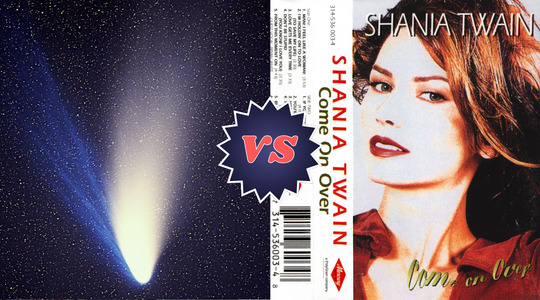
Comet Hale-Bopp: It’s the Great Comet, Charlie Brown! Comet Hale-Bopp, lesser known as C/1995 O1, was one of the most famous and widely observed comets of the 20th century. It was discovered independently by two astronomers, Alan Hale and Thomas Bopp, in July 1995. It’s difficult to predict the maximum brightness of new comets with certainty, but Hale–Bopp exceeded most predictions when it passed perihelion on April 1, 1997. It was visible to the naked eye for a record 18 months, due to its massive nucleus size; this is twice as long as the Great Comet of 1811, the previous record holder. Accordingly, Hale–Bopp was dubbed the Great Comet of 1997. Comet Hale-Bopp provided valuable insights into the composition and behavior of comets and inspired a great deal of scientific and public interest, and its appearance had a significant cultural impact, with many people organizing comet-watching parties and producing art and literature about the cosmic spectacle.
Shania Twain’s Come On Over: Man! I feel like a woman! Come On Over is Shania Twain’s third country-pop album released in 1997. Featuring hits You're Still the One, That Don't Impress Me Much, the titular Come On Over and more, the album helped Twain break into the mainstream music scene, with her crossover success transcending genres. Writing alongside her then-husband and producer, her goal was to create a conversational album reflective of her desires and beliefs, resulting in an album centered on love and empowerment with a backdrop of humor. Propped up by infectious melodies and Twain's charismatic voice, the album left an indelible mark on the country music and broader pop music industry on 1997: with over 40 million copies sold worldwide, Come On Over was recognized by Guinness World Records as the biggest-selling studio album of all time by a solo female artist, and it's one of the best-selling albums in music history.
11 notes
·
View notes
Text
The comet Hale–Bopp (formally designated C/1995 O1) is a comet that was one of the most widely observed of the 20th century and one of the brightest seen for many decades.
Alan Hale and Thomas Bopp discovered Comet Hale–Bopp separately on July 23, 1995, before it became visible to the naked eye. It is difficult to predict the maximum brightness of new comets with any degree of certainty, but Hale–Bopp exceeded most predictions when it passed perihelion (the perihelion [q] and aphelion [Q] are the nearest and farthest points respectively of a body's direct orbit around the Sun) on April 1, 1997, reaching about magnitude −1.8. It was visible to the naked eye for a record 18 months, due to its massive nucleus size. This is twice as long as the Great Comet of 1811, the previous record holder. Accordingly, Hale–Bopp was dubbed the great comet of 1997.
Sadly, there was a tragic footnote to the appearance of Hale-Bopp, 39 people who were part of the "Heaven's Gate" cult in San Diego committed mass s*icide as the comet came close to Earth.
Interestingly enough, Hale-Bopp will return to view in roughly 2380 years as its orbit is incredibly wide and long.

#astronomy#astronomy facts#science#science facts#space exploration#space lovers#science is cool#science is fun#scifi geek#outer space
5 notes
·
View notes
Text




IMAGENES Y DATOS INTERESANTES DEL DIA 23 DE JULIO DE 2023
Día Mundial de las Ballenas y los Delfines, Día Mundial del Síndrome de Sjögren, Día de Batman, Año Internacional del Mijo y Año Internacional del Diálogo como Garantía de Paz.
Santa Zaida / Zoraida, Santa Alcira, San Apolinar, Santa Herundina, San Abilio y Nuestra Señora de la Divina Gracia.
Tal día como hoy en el año 1508: El militar español Pedro Navarro consigue tomar el Peñón de Vélez de la Gomera, guarida de piratas en el mar Mediterráneo. Tras varios meses de campaña persiguiendo piratas con una flotilla que gobernaba.
En 1829: El inventor William Austin Burt patenta el tipógrafo en Estados Unidos, una versión primitiva de la máquina de escribir.
En 1881: Se funda la Federación Internacional de Gimnasia, el organismo más antiguo de los deportes modernos.
En 1973: El presidente de Estados Unidos Richard Nixon se niega a entregar las grabaciones que le implican en el caso Watergate.
En 1995: De manera casi simultanea los astrónomos estadounidenses Alan Hale y Thomas Bopp descubren el cometa Hale-Bopp, una de las efemérides astronómicas más importantes de los años 90.
En 2001: Se logra en la Cumbre del Clima, celebrada en Bonn (Alemania), un acuerdo en el pacto para la reducción de la emisión de gases que provocan el efecto invernadero y por tanto el calentamiento global. Con el voto de 178 países a favor y la única negativa de Estados Unidos.
En 2004: La revista Science hace público que se ha creado una nueva vacuna para combatir la bacteria Haemophilus influenzae tipo b, que causa neumonía y meningitis.
En 2015: La NASA confirma el descubrimiento del exoplaneta Kepler 452-b. Es el primer exoplaneta que se descubre de dimensiones similares a la Tierra que orbita dentro de la zona de habitabilidad.
1 note
·
View note
Text
It has come to my realization that I'm completely head over heels for many British Boys... Tom Holland, Harrison Osterfield, Asa Butterfield, Taron Egerton and Thomas Brodie Sangster... THE LOVE OF MY LIFES
#tom holland#harrison osterfield#asa bopp#taron egerton#thomas brodie-sangster#my loml#peter parker#eggsy unwin#the maze runner
163 notes
·
View notes
Photo

Did you know?
Alan Hale and Thomas Bopp both discovered Comet Hale–Bopp separately on July 23, 1995, before it became visible to the naked eye. It was visible to the naked eye for a record 18 months, due to its massive nucleus size. This is twice as long as the Great Comet of 1811, the previous record holder. Accordingly, Hale–Bopp was dubbed the great comet of 1997.
#hale-bopp#hale-bopp comet#science#comets#space#astronomy#discoveries#on this day#on this day in science history
4 notes
·
View notes
Text

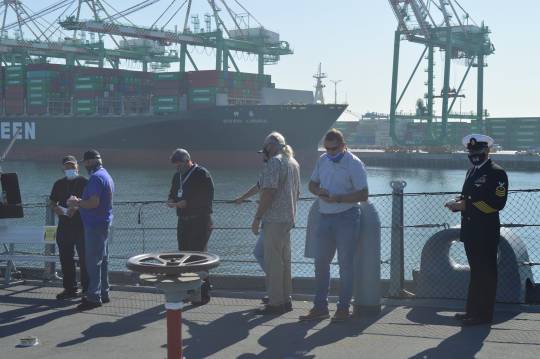
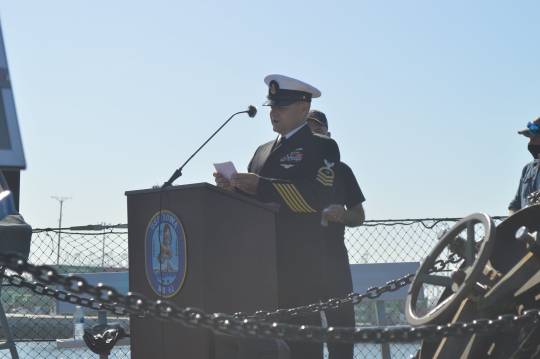
In rememberance today, of those that died in the explosion of turret 2, the USS Iowa held a roll call and memorial ceremony.
Tung Thanh Adams
Robert Wallace Backherms
Dwayne Collier Battle
Walter Scot Blakey
Pete Edward Bopp
Ramon Jarel Bradshaw
Philip Edward Buch
Eric Ellis Casey
John Peter Cramer
Milton Francis Devaul Jr.
Leslie Allen Everhart Jr.
Gary John Fisk
Tyrone Dwayne Foley
Robert James Gedeon III
Brian Wayne Gendron
John Leonard Goins
David L. Hanson
Ernest Edward Hanyecz
Clayton Michael Hartwig
Michael William Helton
Scott Alan Holt
Reginald L. Johnson Jr.
Nathaniel Clifford Jones Jr.
Brian Robert Jones
Michael Shannon Justice
Edward J. Kimble
Richard E. Lawrence
Richard John Lewis
Jose Luis Martinez Jr.
Todd Christopher McMullen
Todd Edward Miller
Robert Kenneth Morrison
Otis Levance Moses
Darin Andrew Ogden
Ricky Ronald Peterson
Mathew Ray Price
Harold Earl Romine Jr.
Geoffrey Scott Schelin
Heath Eugene Stillwagon
Todd Thomas Tatham
Jack Ernest Thompson
Stephan J. Welden
James Darrell White
Rodney Maurice White
Michael Robert Williams
John Rodney Young
Reginald Owen Ziegler
37 notes
·
View notes
Photo


THOMAS BOPP (1949-Died January 5th 2018,at 68.Liver failure). American astronomer best known as the co-discoverer of comet Hale–Bopp (with Alan Hale) in 1995.At the time of the comet discovery he was a manager at a construction materials factory and an amateur astronomer. On the night of July 22,Bopp was observing the sky with friends in the Arizona desert when he made the discovery. It was the first comet he had observed and he was using a borrowed,home-built telescope.Hale and Bopp both discovered the comet by chance at approximately the same time. https://en.wikipedia.org/wiki/Thomas_Bopp
#Thomas Bopp#comet Hale-Bopp#American Astronomers#Notable Deaths in January 2018#Notable Deaths in 2018
0 notes
Text
Round 2A

Comet Hale-Bopp: It’s the Great Comet, Charlie Brown! Comet Hale-Bopp, lesser known as C/1995 O1, was one of the most famous and widely observed comets of the 20th century. It was discovered independently by two astronomers, Alan Hale and Thomas Bopp, in July 1995. It’s difficult to predict the maximum brightness of new comets with certainty, but Hale-Bopp exceeded most predictions when it passed perihelion on April 1, 1997. It was visible to the naked eye for a record 18 months, due to its massive nucleus size; this is twice as long as the Great Comet of 1811, the previous record holder. Accordingly, Hale-Bopp was dubbed the Great Comet of 1997. Comet Hale-Bopp provided valuable insights into the composition and behavior of comets and inspired a great deal of scientific and public interest, and its appearance had a significant cultural impact, with many people organizing comet-watching parties and producing art and literature about the cosmic spectacle.
Mario Kart 64: You're in a car with a beautiful boy, and he won't tell you that he loves you, but-- goddammit, blue shell! Mario Kart 64 is a classic racing game for the Nintendo 64 console, and the second in the Mario Kart series. Sailing overseas in early 1997 for the Western market, it featured eight recognizable characters from the Mario franchise (in later years, a free-for-all selection of beloved Nintendo characters would appear regardless of their prior connection with Mario) racing for death or glory on gaudy, self-referential, and otherwise nostalgic tracks littered with power-ups and hazards. The point of Mario Kart is not so much winning a race as it is systematically breaking down your real-life relationships with other players through sabotage, subterfuge, and guerilla tactics (gorilla tactics, if you're Donkey Kong.) The game introduced 3D track design and four-player support to the franchise and is renowned for iconic courses like Rainbow Road and Wario Stadium, as well as birthing two harbingers of chaos: the infamous blue shell and the powerslide mechanic.
2 notes
·
View notes
Link
Abstract
This chapter addresses certain features of Native American healing practices that have relevance to the treatment of traumatic stress syndromes and other mental states of distress. The major focus will be on American Indian healing practices used for survivors. To those unfamiliar with the ways of American Indian shamans, these practices may seem strange and initially somewhat foreign or even threatening. However, for those willing to learn and be open to experience, there is psychic encounter in ritual that some would term metaphysical or perhaps supernatural. To Native Americans, they are both religious and sacred.
References
Attneave, C. L. (1974). Medicine men and psychiatrists in the Indian health service. Psychiatric Annals, 4(22), 49–55.Google Scholar
Barter, E. R., & Barter, J. T. (1974). Urban Indians and mental health problems. Psychiatric Annals, 4(11), 37–43.Google Scholar
Bergman, R. L. (1971). Navajo peyote use: its apparent safety. American Journal of Psychiatry, 128, 695–699.PubMedGoogle Scholar
Bergman, R. L. (1973). A school for medicine men. American Journal of Psychiatry, 130, 663–666.PubMedGoogle Scholar
Bergman, R. L. (1974). The peyote religion and healing. In R. H. Cox (Ed.), Religion and psychotherapy (pp. 296–306). Springfield, II: Charles C Thomas.Google Scholar
Brown, J. E. (1971). The sacred pipe. Baltimore: Penguin Books.Google Scholar
DeMallie, R. J. (Ed.). (1984). The sixth grandfather: Black Elk’s teaching given to John G. Neihardt. Lincoln: University of Nebraska Press.Google Scholar
Dillon, R. H. (1983). North American Indian wars. New York: Facts on File.Google Scholar
Dizmang, L. H., Watson, J., May, P. A. & Bopp, J. (1974). Adolescent suicide at an Indian reservation. American Journal of Orthopsychiatry, 44, 43–49.PubMedCrossRefGoogle Scholar
Erikson, E. (1968). Identity, youth and crisis. New York: W. W. Norton.Google Scholar
Fuchs, M., & Bashshur, R. (1975). Use of traditional Indian medicine among urban Native Americans. Medical Care, 13, 915–927.PubMedCrossRefGoogle Scholar
Hagan, W. T. (1979). American Indians (Rev. ed.). Chicago: University of Chicago Press.Google Scholar
Harner, M. (1980). The way of the shaman. New York: Harper & Row.Google Scholar
Holm, T. (1982). Indian veterans of the Vietnam War: Restoring harmony tribal ceremony. Four Winds, Autumn, 3, 34–37.Google Scholar
Holm, T. (1984). Intergenerational reapproachment among American Indians: A study of thirty-five Indian veterans of the Vietnam War. Journal of Political and Military Sociology, 12, 161–170.Google Scholar
Holm, T. (1986). Culture, ceremonialism and stress: American Indian veterans and the Vietnam War. Armed Forces and Society, 12, 237–251.PubMedCrossRefGoogle Scholar
Hultkrantz, A. (1979). The religions of the American Indians (Monica Setterwall, Trans.). Berkeley: University of California Press.Google Scholar
Isaacs, H. L. (1978). Toward improved health care for Native Americans: Comparative perspective on American Indian medicine concepts. New York Journal of Medicine, 78, 824–829.Google Scholar
Janoff-Bulman, R. (1985). The aftermath of victimization: Rebuilding shattered assumptions. In C. R. Figley (Ed.), Trauma and its wake: The study and treatment of post-traumatic stress disorder (pp. 15–36). New York: Brunner/Mazel.Google Scholar
Jilek, W. G. (1971). From crazy witch doctor to auxiliary psychotherapist—the changing image of the medicine man. Psychiatric Clinic, 4, 200–220.Google Scholar
Jilek, W. G. (1974). Indian healing power: Indigenous therapeutic practices in the Pacific Northwest. Psychiatric Annals, 4(11), 13–21.Google Scholar
Leighton, A. H. (1968). The mental health of the American Indian—Introduction. American Journal of Psychiatry, 125, 217–218.PubMedGoogle Scholar
Locke, R. F. (1976). The book of the Navajo. Los Angeles: Mankind.Google Scholar
Mails, T. E. (1978). Sundancing at Rosebud and Pine Ridge. Sioux Falls: Center for Western Studies.Google Scholar
Mails, T. E. (1985). Plains Indians: Dog soldiers, bear men, and buffalo women. New York: Bonanza.Google Scholar
Mansfield, S. (1982). The gestalts of war. New York: Dial Press.Google Scholar
May, P. A., & Dizmang, L. H. (1974). Suicide and the American Indian. Psychiatric Annals, 4(11), 22–28.Google Scholar
McNickle, D. (1968). The sociocultural setting of Indian life. American Journal of Psychiatry, 125, 219–223.PubMedGoogle Scholar
Meyer, G. G. (1974). On helping the casualties of rapid change. Psychiatric Annals, 4(11), 44–48.Google Scholar
Red Fox, W. (1971). The memoirs of Red Fox. New York: McGraw-Hill.Google Scholar
Shore, H. H. (1974). Psychiatric epidemiology among American Indians. Psychiatric Annals, 4(11), 56–66.Google Scholar
Silver, S. M. (1985a). Lessons from child of water. (ERIC Document Reproduction Service No. CG 018 606.).Google Scholar
Silver, S. M. (1985b). Post-traumatic stress disorder in veterans. In P. A. Keller & L. G. Ritt (Eds.), Innovations in clinical practice sourcebook (Vol. 4, pp. 23-34). Sarasota Professional Resource Exchange.Google Scholar
Silver, S. M. (1985c). Post-traumatic stress and the death imprint: The search for a new mythos. In W. E. Kelly (Ed.), Post-traumatic stress disorder and the war veteran patient (pp. 43–53). New York: Brunner/Mazel.Google Scholar
Silver, S. M., & Kelly, W. E. (1985). Hypnotherapy of post-traumatic stress disorder in combat veterans from WW II and Vietnam. In W. E. Kelly (Ed.), Post-traumatic stress disorder and the war veteran patient (pp. 211–233). New York: Brunner/Mazel.Google Scholar
Stands In Timber, J., & Liberty, M. (1967). Cheyenne memories. Lincoln: University of Nebraska Press.Google Scholar
Terrell, J. U. (1972). Apache chronicle. New York: World.Google Scholar
Underhill, R. M. (1965). Red man’s religion: Beliefs and practices of Indians north of Mexico. Chicago: University of Chicago Press.Google Scholar
Wallace, A. F. C. (1966). Religion. New York: Random House.Google Scholar
Weibel-Orlando, J., Weisner, T. & Long, J. (1984). Urban and rural drinking patterns: Implications for intervention policy development. Substance and Alcohol Actions/Misuse, 5, 45–57.PubMedGoogle Scholar
Westermeyer, J. (1974). “The drunken Indian:” Myths and realities. Psychiatric Annals, 4(11), 29–36.Google Scholar
Wilson, J. P. (1980). Conflict, stress and growth. In C. R. Figley & S. Leventman (Eds.), Strangers at home: Vietnam veterans since the war (pp. 123–166). New York: Praeger Press.Google Scholar
Wilson, J. P., & Zigelbaum, S. D. (1986). Post-traumatic stress disorder and the disposition to criminal behavior. In C. R. Figley (Ed.), Trauma and its wake: Theory, research and intervention (pp. 305–321). New York: Brunner/Mazel.Google Scholar
Wilson, J. P., Walker, A. J., & Webster, B. (in press). Reconnecting: Stress recovery in the wilderness. In J. P. Wilson (Ed.), Trauma, transformation, and healing. New York: Brunner/Mazel.Google Scholar
Worcester, D. E. (1979). The Apaches. Norman: University of Oklahoma Press.Google Scholar
#native american#Resources#energy medicine#shamanism#Therianthropic Shaman#healing energy#meditation#trauma#books#quantum consciousness#spirituality#integrative medicine
1 note
·
View note
Text
Lawyer for GOP megadonor Harlan Crow offers to meet with Senate Judiciary staff | CNN Politics : Inside US
CNN — A lawyer for Harlan Crow, the GOP megadonor who provided luxury travel and engaged in private real estate deals with Clarence Thomas, has offered to meet with Senate Judiciary Committee staff to discuss its questions regarding the interactions between his client and the Supreme Court justice. In a letter to Senate Judiciary Chair Dick Durbin obtained by CNN, the lawyer, Michael Bopp,…

View On WordPress
0 notes
Text
youtube
Chiara Margarita Cozzolani - Quid miseri
Soprano: Miriam Feuersinger, Marie Luise Werneburg Alto: Flavio Ferri-Benedetti Tenore: Raphael Hoehn, David Munderloh Basso: Lisandro Abadie
Cornetto: Frithjof Smith Violino: Regula Keller, Katharina Heutjer Viola: Katharina Bopp Viola da gamba: Brian Franklin Violone: Thomas Goetschel Tiorba: Maria Ferré Organo: Jörg-Andreas Bötticher
0 notes
Text
21: The Cars // Candy-O

Candy-O The Cars 1979, Elektra
Some people severely underrate running it back. Obviously, it’s great when an artist fearlessly shapeshifts with each release, leaving behind a discography of inspiring diversity and bravery. But let’s hear it for just doing the same shit people liked the first time over again and having it also rock, despite a 5 to 10 percent diminished return. Brother, if every Hale–Bopp of a record like The Cars was followed exactly one year later by a just-about-as-bright encore like Candy-O, I would not be upset in the slightest.
youtube
The Cars pull some archetypal sophomore album moves by moving things in the studio a bit closer to their live sound: out go returning producer Roy Thomas Baker’s signature multi-tracked harmonies and in comes a harder-edged guitar tone to match the nervier energy of Ric Ocasek’s new songs. In place of the debut’s stately, audiophile’s dream suite “Moving in Stereo/All Mixed Up” we have the mangy (by Cars standards), hallucinatory Suicide-homage “Shoo Be Doo” crashing directly into the strafing, high-octane title track. “Nightspots” (written for the first album but left off for more winsome fare like “Don’t Cha Stop”) and “Got a Lot on My Head” twist themselves into hyperactive knots.
Of course, by and large Candy-O still trades in the irresistible roller-rink glitter that made The Cars such an indelible classic. “Let’s Go,” is the album’s sole deathless contribution to the classic rock radio rotation, and it makes the prospect of ‘the nightlife’ sound like a confectioner’s dream every time I hear it. The other hit single “It’s All I Can Do” (also sung by bassist Benjamin Orr) rides some perfectly Ocasekian sweet nothings (e.g. “When I was crazy / I thought you were great”) into the prettiest synth melody the band ever laid down. I’d put the harmony that lead guitarist Elliot Easton and keyboardist Greg Hawks weave together on the all too brief bridge on my short list of perfect moments in rock.
youtube
If you’re a casual fan of The Cars, it’s mostly down to their Greatest Hits-esque debut. Candy-O is the closest they ever came to repeating that level of sustained excellence, and it’s a present waiting on the right summer day to open.
21/365
#the cars#candy-o#ric ocasek#benjamin orr#new wave#vinyl#music review#'70s rock#roy thomas baker#'70s music
0 notes